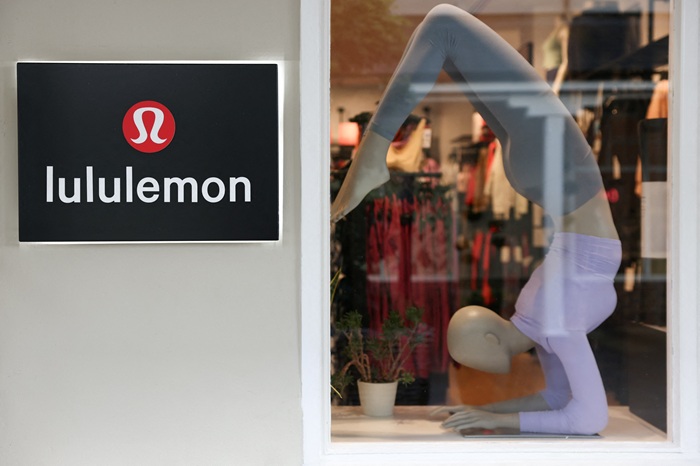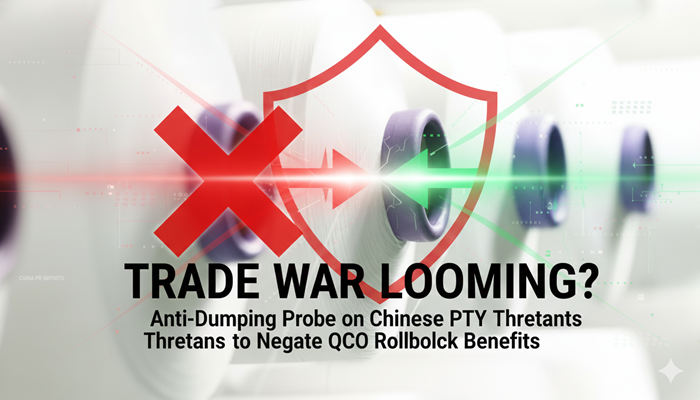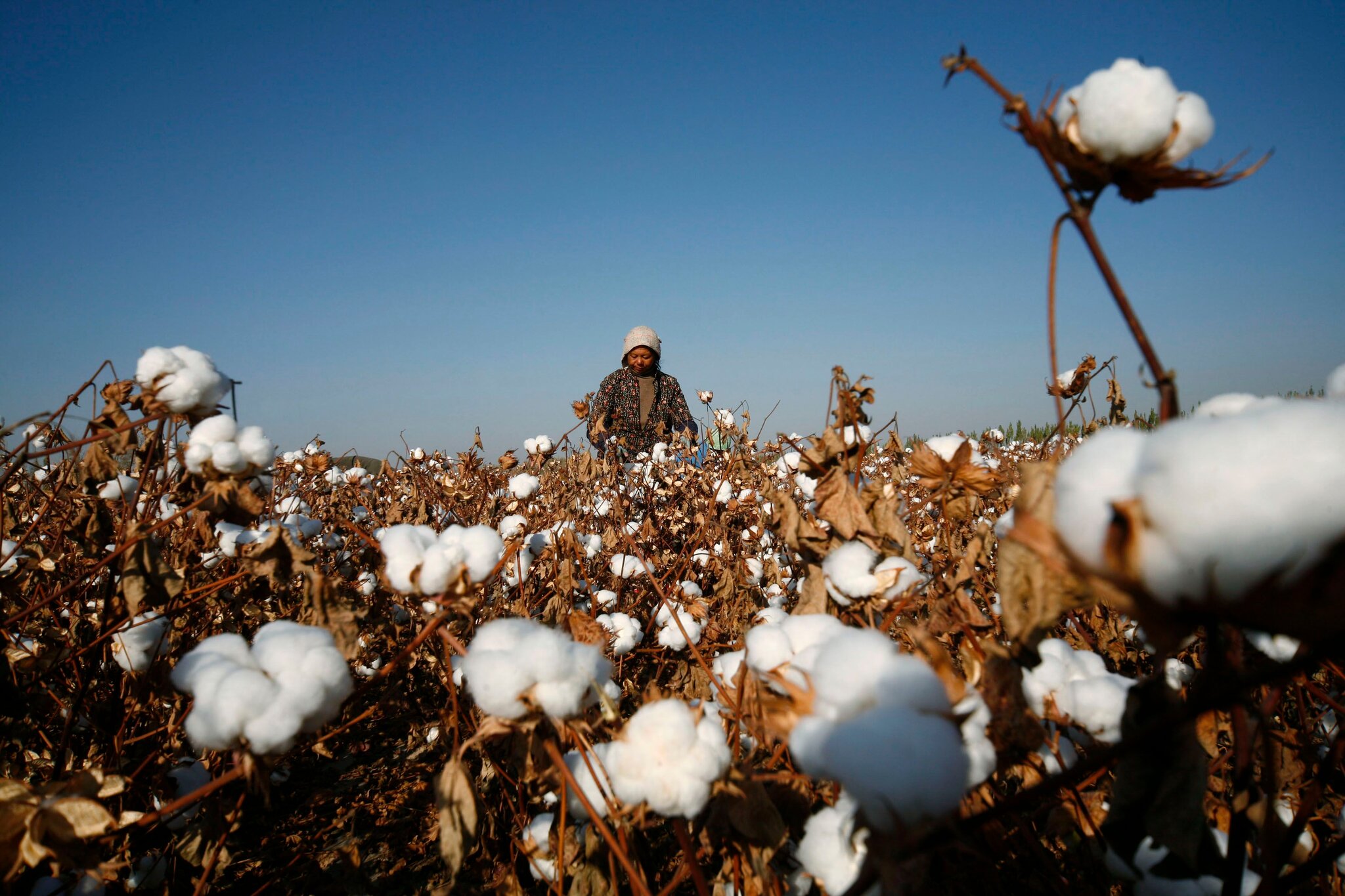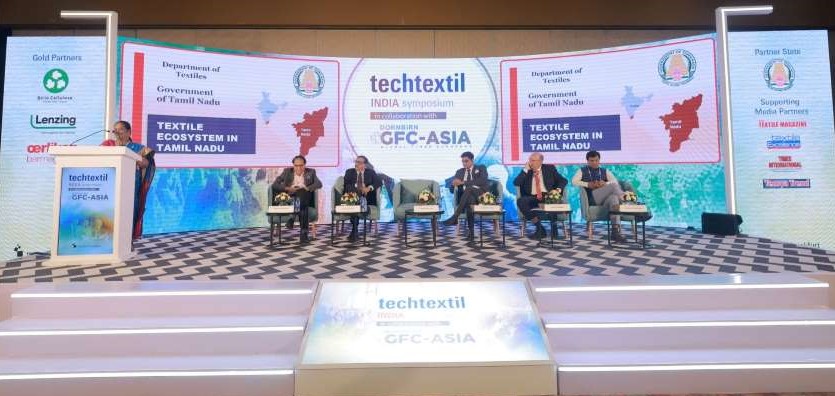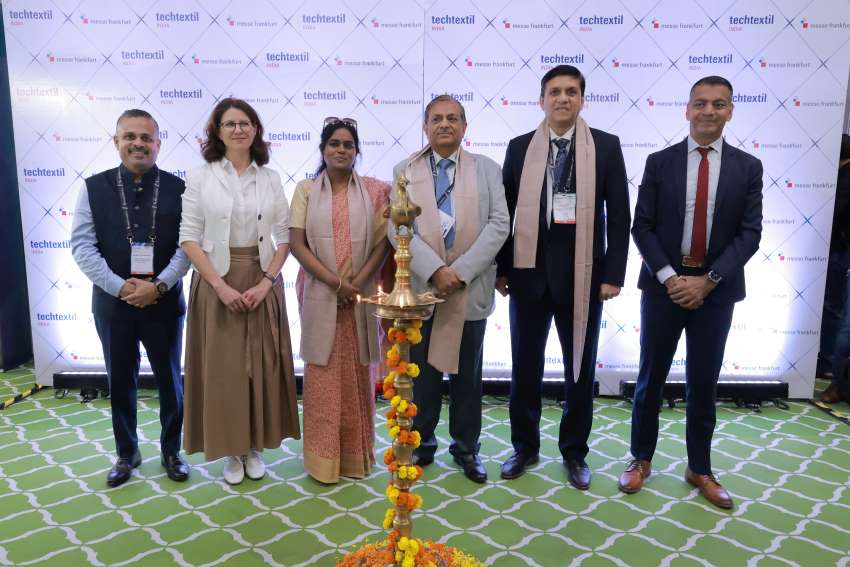FW
Global apparel retailer, Uniqlo has partnered with Academy Award-winning actor, Cate Blanchett as its newest Global Brand Ambassador. Blanchett will work with Uniqlo to promote the brand’s LifeWear philosophy, which focuses on a continuous pursuit of excellence, humanitarian support, and positive social contributions.
Tadashi Yanai, Founder and Chairman, Uniqlo, states, Blanchett is one of the greatest actors of her generation. Her passion is evident in her contributions as a role model for women, her mentorship of emerging artists, and her long-standing commitment to humanitarian and environmental causes. Through this partnership, we will work together to make positive changes in the world.
Blanchett quips, Uniqlo’s mission to improve lives through its LifeWear apparel: timeless design, perfected simplicity, affordable, accessible, quality clothing that lasts, is admirable She adds, she's energized by the opportunity to support key aspects of the LifeWear philosophy, including helping the next generation, highlighting the global displacement crisis, giving back to communities, and contributing to a more equitable world.
One of the world's most celebrated actors and producers, Blanchett is known for her roles in films like Tár, Carol, The Aviator, and Elizabeth, as well as her acclaimed work on stage. She is also a style icon and a key figure behind the scenes, having served as co-Artistic Director of the Sydney Theatre Company and as a co-founder of the production company Dirty Films.
Danish fashion company Bestseller has made a strategic investment in the German cleantech company matterr to support its groundbreaking polyester recycling technology. This investment was made through Bestseller's innovation and investment arm, Invest FWD.
The partnership is a significant step toward addressing the fashion industry's sustainability challenges. Matterr has developed a chemical recycling technology that transforms hard-to-recycle textile and packaging waste into new raw materials that are identical in quality to virgin polyester. This process allows polyester to be reused repeatedly without relying on fossil fuels.
Bestseller's investment, combined with a substantial €30 million grant from the EU, will help matterr build a small-scale industrial plant by 2026. This new facility is designed to process 10,000 tons of polyester-rich waste annually.
According to Bestseller, one of the reasons for this investment is the scalability of matterr’s technology. The goal is to create solutions that can benefit the entire fashion industry, not just Bestseller's own supply chain. This aligns with Bestseller's broader ambition to reduce its dependence on fossil fuels and increase the use of recycled materials.

Marking a significant milestone with an all-time high participation, the 13th edition of Gartex Texprocess India 2025 kicked off at the Bharat Mandapam, Pragati Maidan in New Delhi. Being held from August 21-23, the three-day event is being jointly organized by Messe Frankfurt Trade Fairs India and MEX Exhibition. This year's expo boasts over 200 exhibitors and more than 600 brands, with a remarkable 35 per cent of participants being first-time exhibitors. The sheer scale and diversity of the show solidify its reputation as a premier global platform for the textile industry.
The 2025 edition introduces two exciting new features; the LeatherX Pavilion and the Textile Care Forum, making the event more comprehensive than ever. The show floor spans over 150,000 sq ft, buzzing with activity as stakeholders from across the value chain - from yarn to finished products - engage in meaningful conversations and exchange innovative ideas. International participation is also at a record high, with brands from China, Japan, Italy, Germany, and Singapore joining the fray. Notable global companies include Durst, Morimota Singapore (Kansai), Epson, Morgan, Jinjen, Groz Beckert, Brothers International, Jack Franc, Veolia, and Amazon. The high energy and vigorous activity across all stalls on the first day are a clear indicator of the show's success and the industry's robust health.
Government leaders emphasize growth and sustainability
The inauguration ceremony brought together key government officials and industry leaders. In his address as the Chief Guest for the event, Manohar Lal Khattar, Minister of Housing & Urban Affairs and Minister of Power, highlighted the textile industry’s crucial role in job creation, noting, it employs over 45 million people, including a large number of women and rural populations. He also acknowledged the government’s various initiatives and incentives designed to boost the sector and generate employment.
Speaking about the transition to renewable energy, Khattar urged attendees to upgrade their plants to green energy sources, pointing out, India has already met its 2030 target of replacing 50 per cent of its energy with clean sources. The government has have extended several schemes, including subsidies up to 75 per cent, he stated, reinforcing the government’s commitment to its Mission 2047 goal of reducing emissions.
Guest of Honor Rakesh Sachan, Minister of MSME, Khadi, Village Industries, Sericulture, and Textile and for the Government of Uttar Pradesh, focused on the need for indigenous machinery. He noted, the Indian textile industry still heavily relies on imports and shared how the Uttar Pradesh government is working to support industrial growth. This includes the development of a 150-acre apparel cluster in Noida, which will be the state's first textile park. This project aims to attract investment, create jobs, and boost exports. Addressing the recent US tariffs, Shri Sachan called for the industry to "upgrade and create capacity" and "improve on indigenous technology."
Industry leaders express optimism
The opening ceremony featured a distinguished lineup of dignitaries, including Raj Manek, Executive Director & Board Member, Messe Frankfurt Asia Holdings and Himani Gulati, Director, MEX Exhibitions.
Expressing his excitement about the overwhelming response, Manek said, India is high on the global textile map, and Gartex Texprocess India 2025 is a perfect platform to up the ante and bring all stakeholders together under one umbrella.
The exhibition features several special zones, including The Denim Show, organized in association with the Denim Manufacturers Association, as well as the Fabrics and Trims Show, and Screen Print India (Textile). The new LeatherX Pavilion and the launch of the Textile Care Forum, in partnership with the Drycleaners and Launderers Association of India, add further value, connecting various segments of the industry. The overwhelming success of the first day is a testament to India's growing dominance in the global textile space, and the remaining days of the exhibition are expected to yield even more positive results.

A recent study on French consumer habits in the fashion industry throws up a concerning picture, suggesting that the allure of ultra-fast fashion and fast fashion is leading consumers to spend more, acquire an excessive number of items, and even compromise on health and quality, often without realizing the true extent of their consumption. The study highlights prêt-à-porter (ready-to-wear) as the more economical and sustainable choice, despite prevalent misconceptions.
The true cost of ‘cheap’ fashion
The report indicates a disparity in annual clothing budgets among different consumer groups. While prêt-à-porter consumers spend an average of €330 annually, those opting for fast fashion and ultra-fast fashion spend considerably more, at €442 and €446 respectively. Consumers of an unspecified category (likely a blend or other fashion type) spend €613, and another unspecified group (possibly higher-end fast fashion or a hybrid) spends €688. The highest annual expenditure of €810 is observed in a category not explicitly defined but distinct from the others presented.
Table: Annual clothing budget spent of French consumers
|
Fashion Type |
Annual clothing budget (€) |
|
Prêt-à-porter |
330 |
|
Fast Fashion |
442 |
|
Ultra-Fast Fashion |
446 |
|
(Unspecified Category 1) |
613 |
|
(Unspecified Category 2) |
688 |
|
(Unspecified Category 3) |
810 |
Data represents annual clothing budget spent by French consumers for themselves and their children, according to their consumption mode.
Contrary to the marketing claims of companies like Shein, ultra-fast fashion is not the economic ‘eldorado’ it purports to be for the most budget-conscious consumers. In fact, consumers of fast fashion allocate an apparel budget twice as large as those who buy prêt-à-porter, for both themselves and their children. Prêt-à-porter is presented as a more responsible, higher quality, durable, and economical investment, making it a more virtuous choice for modest consumers.
The illusion of consumption, underestimation and regret
One of the most striking findings is the profound disconnect between perceived and actual consumption in the ultra-fast fashion segment. Consumers of ultra-fast fashion significantly underestimate their real consumption by half (-2.1 per cent), declaring 97 pieces when approximately 200 pieces are found. This phenomenon is attributed to "malicious strategies" employed by ultra-fast fashion brands that "extinguish consumers' awareness," manipulating them into "automatic mode" purchasing. Despite this, 35 per cent of Shein's customers in France acknowledge that the quantity of items in their wardrobes has increased annually since they started purchasing from the Chinese brand.
The study also reveals a high degree of buyer's remorse among ultra-fast fashion consumers. Nearly half (48 per cent) regret their purchases after having bought clothes on an ultra-express fashion platform. This regret is often due to the "disposable fashion" nature of these items, which saturate wardrobes with unused clothing because of their disappointing quality, shoddy finishes, and perishable style. In contrast, the immediate product experience offered in physical boutiques is identified as a competitive advantage for prêt-à-porter.
Health risks and social media influence
Beyond the financial and psychological impacts, the report raises serious concerns about health, especially regarding children's clothing. Among French consumers who purchase clothes for their children monthly, almost half (44 per cent) consume fast fashion. These fast and cheap garments are often made from petrochemical-derived materials, including artificial and synthetic fabrics containing toxic products sometimes banned in France yet come into direct contact with children's skin. The study emphasizes that in addition to environmental and social issues, fast and ultra-fast fashion pose real health risks.
The pervasive influence of fast fashion brands through social media also plays a significant role in consumer behavior. Approximately 30 per cent of French individuals are subscribed to a fast fashion brand on social media. This makes them a "captive target of aggressive over-communication," constantly incentivized to over-consume. Consumers' discernment is weakened by frenetic marketing and influencer strategies, trapping them with "pseudo-promotions" and an incessant flow of new arrivals.
The findings suggest a critical need for increased consumer awareness and education regarding the true costs both financial and otherwise associated with fast and ultra-fast fashion. Promoting the benefits of prêt-à-porter, including its economic advantages and superior quality, could be key to shifting consumer habits towards more sustainable and healthier choices.
According to the Brazilian Cotton Growers Association (Abrapa), Brazil concluded the MY24/25 spanning from August–July with record-breaking exports of 2.83 million tons of cotton lint. This represents a 5.8 per cent increase over the previous season, solidifying Brazil's position as the world's leading cotton exporter. The total export revenue for the year reached $4.85 billion.
The top three export destinations were Vietnam, Pakistan, and China, which together imported 1.48 million tons, accounting for 52 per cent of Brazil’s total shipments. Vietnam was the largest buyer, with 532,490 tons, followed by Pakistan (494,114 tons) and China (458,905 tons).
Despite the record annual numbers, exports in July 2025 declined sharply. Brazil exported 127,000 tons of cotton during the month, a 24 per cent Y-o-Y decline, generating $205 million. The largest buyers in July were Turkey, Bangladesh, and Vietnam.
Looking ahead, Brazil's 2025 cotton crop is projected to rise by 7 per cent to 3.96 million tons. The estimated planting area increased by 10.3 per cent to 2.14 million hectare. However, average yields are expected to decline by 2.9 per cent to 1,849 kg/ha.
In other news, Abrapa hosted the first ‘Brazilian Cotton Dialogues,’ in July. This five-day event brought global stakeholders to farms in Brazil's main cotton-producing states. Attendees praised Brazil's large-scale operations, advanced fiber quality controls, regenerative farming practices, and the significant environmental preservation efforts by growers.
Workers at the textile park in the Thangallapalli mandal, launched a strike on August 19, demanding higher wages. The protest began after repeated calls for a wage increase for both government and private garment workers were ignored by factory owners.
During a meeting of powerloom workers, led by Koochana Shankar, Union President participants unanimously voted to stop all work until the wage increase is implemented.
Following the meeting, the striking workers held a rally and staged a protest. Kodam Ramana, District President, CITU Powerloom Workers Union, restated the demand for an increase in labor wages and an additional Rs 1,000 per day for workers producing government garments.

Once a humble alternative for budget-conscious shoppers, private labels often called store brands have stealthily evolved into a commanding force in the American retail market. The days when they were dismissed as lower-quality knock-offs are gone. Today, private labels are a shopper’s savvy choice, winning over consumers with competitive pricing, elevated quality, and the ability to respond nimbly to shifting trends. This quiet but powerful change is being due to evolving consumer habits, economic pressures, and the foresight of retailers who have reimagined what their in-house brands can be.
From budget shelf to prime spot
In 2024, the US private label market was valued at $271 billion, which is a 3.9 per cent growth from previous year, well ahead of the 1 per cent growth recorded by national brands. On a global scale, the story is even bigger. The market stood at $915.1 billion in 2024 and is projected to touch $1.623 trillion by 2034, with 5.9 per cent CAGR over the decade.
Table: Global private label market
|
Metric |
Details |
|
US Market Size in 2024 |
$271 billion |
|
Sales Growth in 2024 |
+3.9% (vs. 1% for national brands) |
|
Global Market Size in 2024 |
$915.1 billion |
|
Projected Global Market in 2034 |
$1,623.4 billion |
|
CAGR (2025-34) |
5.90% |
In fact, the fashion and apparel sector is a major contributor to overall private label segment. For long, this was a difficult category for private labels to penetrate, but that's changing rapidly.
Trends and perspectives
Premiumization and brand building: Retailers are investing heavily in creating private label apparel that is not only affordable but also stylish and high-quality. Brands like Target's Cat & Jack for kids and Dillard's Kinesis athleisure line are examples of this trend, offering customers unique products that rival national brands.
Focus on sustainability and ethics: The private label apparel industry is increasingly catering to consumer demand for sustainable and ethically sourced clothing. Manufacturers are using organic cotton and recycled fabrics, and retailers are highlighting their commitment to transparent supply chains, which resonates strongly with modern consumers.
E-commerce and DTC: The rise of e-commerce has made it easier for retailers and even small startups to launch their own private label apparel lines. This model allows for greater flexibility, lower minimum order quantities, and a faster response to emerging fashion trends, giving private labels a significant competitive advantage over traditional brands with slower production cycles.
Retailers leading the charge
The success of private labels is often tied to the retailers that champion them. These brands are no longer just products on a shelf; they are a core part of the retailer's identity.
• Trader Joe's: This grocer has built its entire reputation on a curated selection of unique, high-quality private label products. From gourmet snacks to staples, Trader Joe's has cultivated an exceptionally loyal customer base who trusts the brand's quality and is often unaware they are even purchasing a private label product.
• Costco's Kirkland Signature: A testament to the power of a trusted private label, Kirkland Signature has become a brand in its own right. It offers members a wide range of bulk goods—from groceries to clothing—that are perceived as offering superior value and quality to many national brands.
Table: Top 10 US private label brands: consumer perception at a glance
|
Rank |
Brand |
Parent retailer |
Strengths |
Consumer perception |
|
1 |
Kirkland Signature |
Costco |
Broad product range, bulk value, and high quality control. |
"High quality at unbeatable prices," "trustworthy," and "a wise choice." |
|
2 |
Trader Joe’s |
Trader Joe’s |
Unique, curated grocery products, fun branding, and limited selection. |
"Quirky, trustworthy, and gourmet," "unique," and "great value for specialty items." |
|
3 |
Cat & Jack |
Target |
Stylish, durable, and inclusive kidswear. |
"Affordable fashion for growing kids," and a "perfect blend of style, durability, and affordability." |
|
4 |
365 by Whole Foods Market |
Whole Foods/Amazon |
Organic and natural foods with high-quality standards. |
"Healthy living made affordable," and "affordably priced and thoughtfully sourced." |
|
5 |
Good & Gather |
Target |
Fresh and packaged foods with clean labels and elevated design. |
"Everyday quality for every budget," and "real ingredients, everyday ease, and feel-good food." |
|
6 |
Simple Truth |
Kroger |
Organic and "free-from" groceries, with a focus on healthy and clean ingredients. |
"Clean eating without the premium price," and "better-for-you products that are Free From unwanted ingredients." |
|
7 |
Great Value |
Walmart |
Extensive grocery basics, reliability, and extreme value. |
"Low prices without big compromises," and "great quality, great price." |
|
8 |
Up & Up |
Target |
Household essentials, personal care, and baby products. |
"Reliable everyday products," and "affordable without sacrificing aesthetics or quality." |
|
9 |
Amazon Basics |
Amazon |
Functional, low-cost electronics, accessories, and home goods. |
"Functional, low-cost solutions," and "budget-friendly, with many products costing half as much as their counterparts." |
|
10 |
Kinesis |
Dillard’s |
Athleisure and activewear, with department store styling. |
"Department store style, private label price," and "a trusted choice for affordable activewear." |
Why private labels are gaining ground
The success of private labels is no accident it’s a reflection of retailers’ ability to listen to consumers and innovate quickly. Unlike national brands that must appeal to broad markets, private labels can be tightly tailored to the needs, tastes, and values of a retailer’s customer base.
With inflation influencing shopping habits, consumers are also more willing to experiment. When they discover that a store’s own brand can match or even surpass the quality of their usual pick, loyalty shifts. And once trust is built, it often extends across categories, from pantry staples to premium fashion.
Moving from being ‘alternative’ to ‘first choice’
Private labels’ growth suggests they will no longer be a quiet presence in the background. Instead, they’re becoming the very backbone of modern retail strategy defining store identity, enhancing customer loyalty, and reshaping the competitive landscape. What began as a cost-saving measure is now an engine of growth, creativity, and brand equity. For national brands, this is no longer a challenge they can ignore. For consumers, it’s a win: more choice, better value, and increasingly, products they can feel good about buying.
SBC Exports has signed an export agreement with the Dubai-based Huxxe Readymade Garments Trading LLC, Valued at Rs 17.56 crorre, the order involves supply of garments, including T-shirts, trousers, and shorts.
The order is scheduled to be completed within one year from the purchase order date of August 14, 2025. This deal is expected to start contributing to SBC Exports' revenue in the current financial year. The company anticipates that this partnership will support its projected 15–20 per cent annual growth in export turnover, increase profitability, diversify its market presence, and strengthen its position in the global apparel industry.
According to the contract, all payments will be made in US dollars within 90 days of HUXXE receiving the goods. The Dubai-based buyer will also cover the expenses for insurance and freight. The contract will be governed by the laws of the United Arab Emirates.
India and the Eurasian Economic Union (EAEU) are negotiating a Free Trade Agreement (FTA), with officials signing the Terms of Reference (ToR) in Moscow.
Outlining the framework for the negotiations, the ToR was signed by Ajay Bhadoo, Additional Secretary, Department of Commerce, and Mikhail Cherekaev, Deputy Director, Trade Policy Department, Eurasian Economic Commission.
Both sides noted, trade between India and the EAEU – including Armenia, Belarus, Kazakhstan, the Kyrgyz Republic, and the Russian Federation – increased by 7 per cent to $69 billion in 2024.
With the EAEU having a combined GDP of $6.5 trillion, the proposed FTA is expected to boost India's exports by enhancing market access, helping businesses diversify into new sectors, and increasing competitiveness. The Ministry of Commerce & Industry stated, the agreement will particularly benefit Micro, Small and Medium Enterprises (MSMEs).
The signing of the ToR marks a crucial step toward unlocking new trade potential, increasing investment, and building a stronger, long-term economic partnership between India and the EAEU. Both parties have committed to concluding the agreement quickly.
UK clothing exports declined by 3.69 per cent Y-o-Y to $377 million in June 2024, as demand from Europe weakened, costs rose and competition from Asian markets intensified.
This recent data point underscores a sustained downward trend in UK clothing exports since 2021, reflecting the ongoing challenges posed by post-Brexit trade frictions. The quarterly data for Q2, FY24 shows a 6.7 per cent Y-o-Y decline in total clothing exports at $1.09 billion. This is part of a broader trend where total UK goods exports have been declining, with a significant 18 per cent contraction in non-EU exports in June 2024 compared to the previous year.
While clothing exports have struggled, other sectors of the textile industry, such as textile fabrics and fibers, have shown more stability. For example, textile fabric exports declined by 3.6 per cent in June but saw a monthly increase. Similarly, fiber exports also saw a marginal increase.
For the UK textile and apparel industry to rebound, a renewed focus on diversification and value-added strategies is crucial. This is particularly important as the sector grapples with a decline in exports and a shift in consumer behavior toward more mindful consumption.


